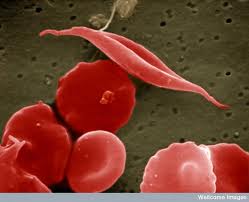Paternity and Maternity
A person is inherits his or her variable number tandem repeat (VNTR) from his or her parents, VNTR patterns can be used to establish paternity and maternity. The patterns are so specific that a parental VNTR pattern can be reconstructed even if only the children's VNTR patterns are known (the more children produced, the more reliable the reconstruction). Parent-child VNTR pattern analysis has been used to solve standard father-identification cases as well as more complicated cases of confirming legal nationality and, in instances of adoption, biological parenthood.
Diagnosis of Inherited Disorders
DNA fingerprinting is used to diagnose inherited disorders in both prenatal and newborn babies in hospitals around the world. These disorders may include cystic fibrosis, hemophilia, Huntington's disease, Huntington's horea, Marfan's syndrome Alzheimer's disease (Familial
Type), sickle cell anemia, thalassemia, and many others.
Type), sickle cell anemia, thalassemia, and many others.
Early detection of such disorders enables the medical staff to prepare themselves and the parents for proper treatment of the child. In some programs, genetic counselors use DNA fingerprint information to help prospective parents understand the risk of having an affected child. In other programs, prospective parents use DNA fingerprint information in their decisions concerning affected pregnancies.
Developing Cures for Inherited Disorders
Research programs to locate inherited disorders on the chromosomes depend on the information contained in DNA fingerprints. By studying the DNA fingerprints of relatives who have a history of some particular disorder, or by comparing large groups of people with and without the disorder, it is possible to identify DNA patterns associated with the disease in question. This work is a necessary first step in designing an eventual genetic cure for these disorders.
Biological Evidence
FBI and police labs around the U.S. have begun to use DNA fingerprints to link suspects to biological evidence - blood or semen stains, hair, or items of clothing - found at the scene of a crime. Since 1987, hundreds of cases have been decided with the assistance of DNA fingerprint evidence.
Another important use of DNA fingerprints in the court system is to establish paternity in custody and child support litigation. In these applications, DNA fingerprints bring an unprecedented, nearly perfect accuracy to the determination.
Personal Identification
Since every organ or tissue of an individual contains the same DNA fingerprint, the U.S. armed services have just begun a program to collect DNA fingerprints from all personnel for use later, in case they are needed to identify casualties or persons missing in action. The DNA method will be far superior to the dogtags, dental records, and blood typing strategies currently in use.



